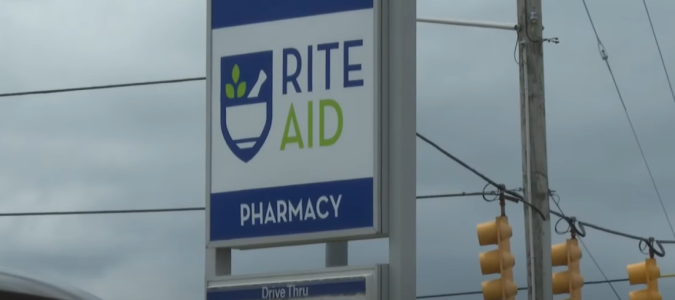63 Years of memories come to an end as chain shutters every one of its 1,240 stores
- Replies 0
Sometimes, a name becomes such a fixture of daily life that it feels like it will always be there, quietly holding its place on the corner of the neighborhood.
Generations pass through its aisles, picking up prescriptions, grabbing last-minute essentials, or simply browsing familiar shelves.
Then, one day, the lights go dark and the doors shut for the final time, leaving behind only memories of what once was.
That’s the reality facing shoppers across the country as one of America’s most recognizable pharmacy chains disappears for good.
“All Rite Aid stores have now closed,” the company confirmed on its website, thanking loyal customers for decades of support.
It’s the end of a 63-year run that began in 1962, when the first store opened under the name Thrift D Discount Center.
The closures follow two bankruptcy filings in less than two years, with executives citing mounting financial pressures and an unforgiving retail and healthcare landscape.
Shelves had already been sitting empty in many locations as the company struggled to keep pace with competitors.

By September 2025, Rite Aid had dwindled to just 89 stores across 12 states, a sharp drop from the 2,451 stores it operated only a few years earlier.
The last remaining locations, including those in Washington and Oregon, officially closed on September 29.
In its bankruptcy proceedings, the company transferred prescription files to CVS, which also purchased 64 of its former stores in the Northwest.
Across 15 states, another 625 prescription records were absorbed by competitors to ensure customers weren’t left without access to medication.
Also read: An American retail tradition comes to a close after 135 years
The decline was long in the making, according to analysts. Neil Saunders of GlobalData told CNN that Rite Aid “has been teetering on the edge of survival for quite some time” and that its first bankruptcy “did little to resolve the chain’s issues.”
CEO Matt Schroeder admitted financial challenges were intensified by a rapidly changing marketplace that left the company behind.
For shoppers, that reality translated into bare shelves and mounting frustration. The closures have been felt most deeply in communities where Rite Aid was more than just a pharmacy but a neighborhood anchor.
In Buffalo, New York, residents now face serious inconvenience after the loss of 16 stores. “When you shut that down, you made it inconvenient and very difficult for them to get their medication,” one resident told WKBW.
Also read: Major retailers cut key healthcare services—here’s what’s changing and why it matters
Another added, “I’m a diabetic and I need to get to my medicine. I don’t have a car or anything, I’m doing the bus and train.”
Rite Aid’s fall marks the end of an era that began with optimism in the 1960s and grew into more than 1,200 locations nationwide.
Over time, pressures from larger rivals and changing consumer habits chipped away at its footing until the closures became inevitable.
While competitors like CVS have absorbed many of its files and stores, the familiar blue-and-white signs that once dotted countless towns are now history.
For many longtime customers, the absence will be felt every time they pass an empty storefront that once offered both convenience and care.
Read next: Rite Aid turns to CVS to save dozens of stores from closing for good

What are your thoughts on Rite Aid’s disappearance—do you see it as the inevitable end of an outdated chain, or a loss that will leave real gaps in communities? Share your perspective in the comments and let us know what this closure means where you live.
Generations pass through its aisles, picking up prescriptions, grabbing last-minute essentials, or simply browsing familiar shelves.
Then, one day, the lights go dark and the doors shut for the final time, leaving behind only memories of what once was.
That’s the reality facing shoppers across the country as one of America’s most recognizable pharmacy chains disappears for good.
“All Rite Aid stores have now closed,” the company confirmed on its website, thanking loyal customers for decades of support.
It’s the end of a 63-year run that began in 1962, when the first store opened under the name Thrift D Discount Center.
The closures follow two bankruptcy filings in less than two years, with executives citing mounting financial pressures and an unforgiving retail and healthcare landscape.
Shelves had already been sitting empty in many locations as the company struggled to keep pace with competitors.

63 Years of memories come to an end as chain shutters every one of its 1,240 stores. Image source: KRCR News Channel 7 / YouTube
By September 2025, Rite Aid had dwindled to just 89 stores across 12 states, a sharp drop from the 2,451 stores it operated only a few years earlier.
The last remaining locations, including those in Washington and Oregon, officially closed on September 29.
In its bankruptcy proceedings, the company transferred prescription files to CVS, which also purchased 64 of its former stores in the Northwest.
Across 15 states, another 625 prescription records were absorbed by competitors to ensure customers weren’t left without access to medication.
Also read: An American retail tradition comes to a close after 135 years
The decline was long in the making, according to analysts. Neil Saunders of GlobalData told CNN that Rite Aid “has been teetering on the edge of survival for quite some time” and that its first bankruptcy “did little to resolve the chain’s issues.”
CEO Matt Schroeder admitted financial challenges were intensified by a rapidly changing marketplace that left the company behind.
For shoppers, that reality translated into bare shelves and mounting frustration. The closures have been felt most deeply in communities where Rite Aid was more than just a pharmacy but a neighborhood anchor.
In Buffalo, New York, residents now face serious inconvenience after the loss of 16 stores. “When you shut that down, you made it inconvenient and very difficult for them to get their medication,” one resident told WKBW.
Also read: Major retailers cut key healthcare services—here’s what’s changing and why it matters
Another added, “I’m a diabetic and I need to get to my medicine. I don’t have a car or anything, I’m doing the bus and train.”
Rite Aid’s fall marks the end of an era that began with optimism in the 1960s and grew into more than 1,200 locations nationwide.
Over time, pressures from larger rivals and changing consumer habits chipped away at its footing until the closures became inevitable.
While competitors like CVS have absorbed many of its files and stores, the familiar blue-and-white signs that once dotted countless towns are now history.
For many longtime customers, the absence will be felt every time they pass an empty storefront that once offered both convenience and care.
Read next: Rite Aid turns to CVS to save dozens of stores from closing for good
Key Takeaways
- Rite Aid has officially shut down all 1,240 stores, ending a six-decade run that began in 1962.
- The chain filed for bankruptcy twice, unable to overcome financial struggles and stiff competition in the pharmacy market.
- CVS has taken over some stores and prescription files, ensuring customers still have access to medication.
- Communities that relied on Rite Aid are now left with vacant storefronts and fewer options for filling prescriptions.






